Abstract
Rat lymphoma cells sensitized with antibody and incubated with normal macrophages were shown to become resistant to damage from cytotoxic antibody and complement or cytotoxic lymphocytes. Both lymphoma specific antibody and normal macrophages were required to produce protection. The cytotoxic effect of lymphocytes or antibody with complement and the protective effect of antibody with macrophages was assessed by 51Cr release and by loss of capacity of lymphoma cells to transfer the disease to syngeneic rats. No cytotoxic effect could be attributed to macrophages from sensitized allogeneic rats. Inhibition of phagocytosis by Cytochalasin B did not destroy the capacity of macrophages to protect lymphoma cells. Sodium fluoride, however, did block the protective effect.
It is envisaged that this protective phenomenon may be of importance in understanding some aspects of growth of tumours in vivo despite the presence of immune cytotoxic mechanisms.
Full text
PDF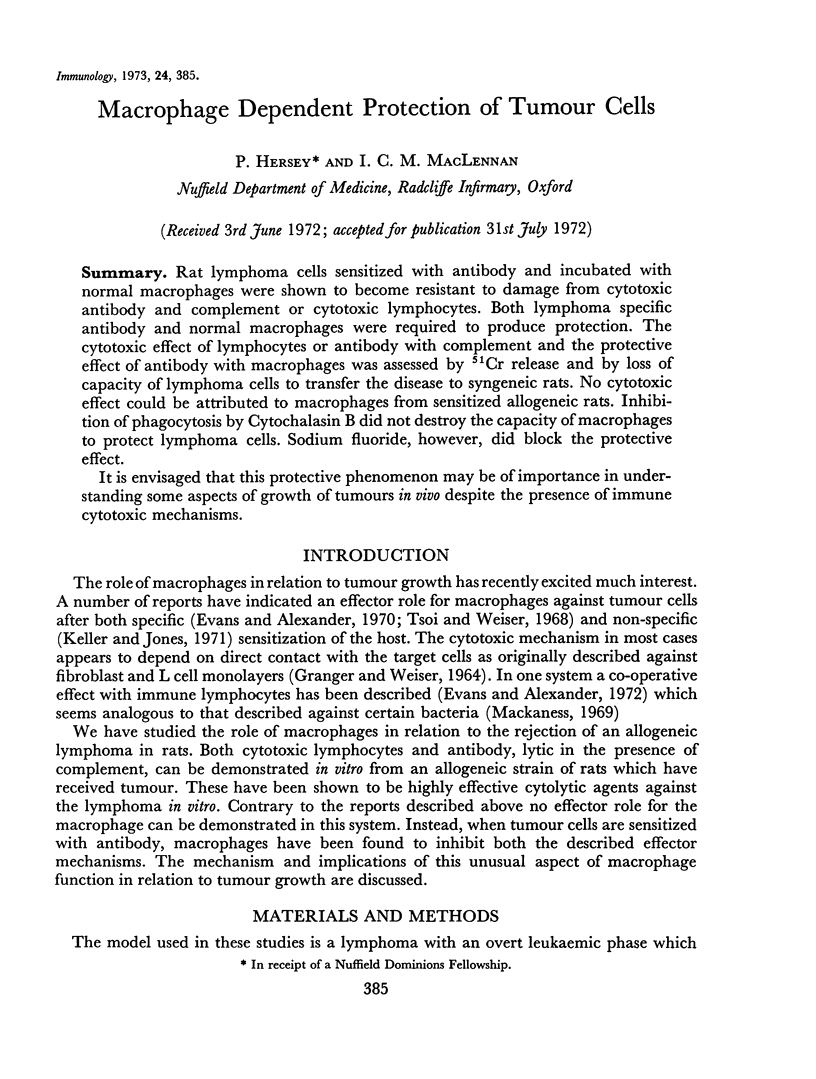
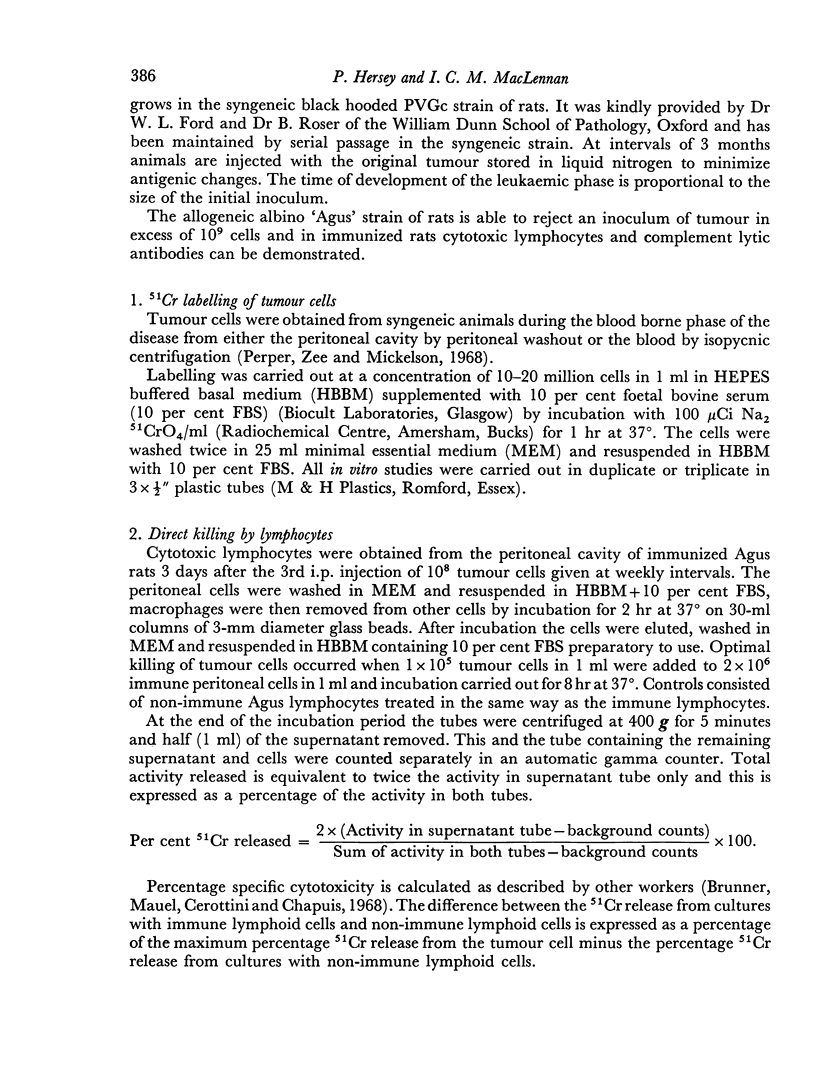

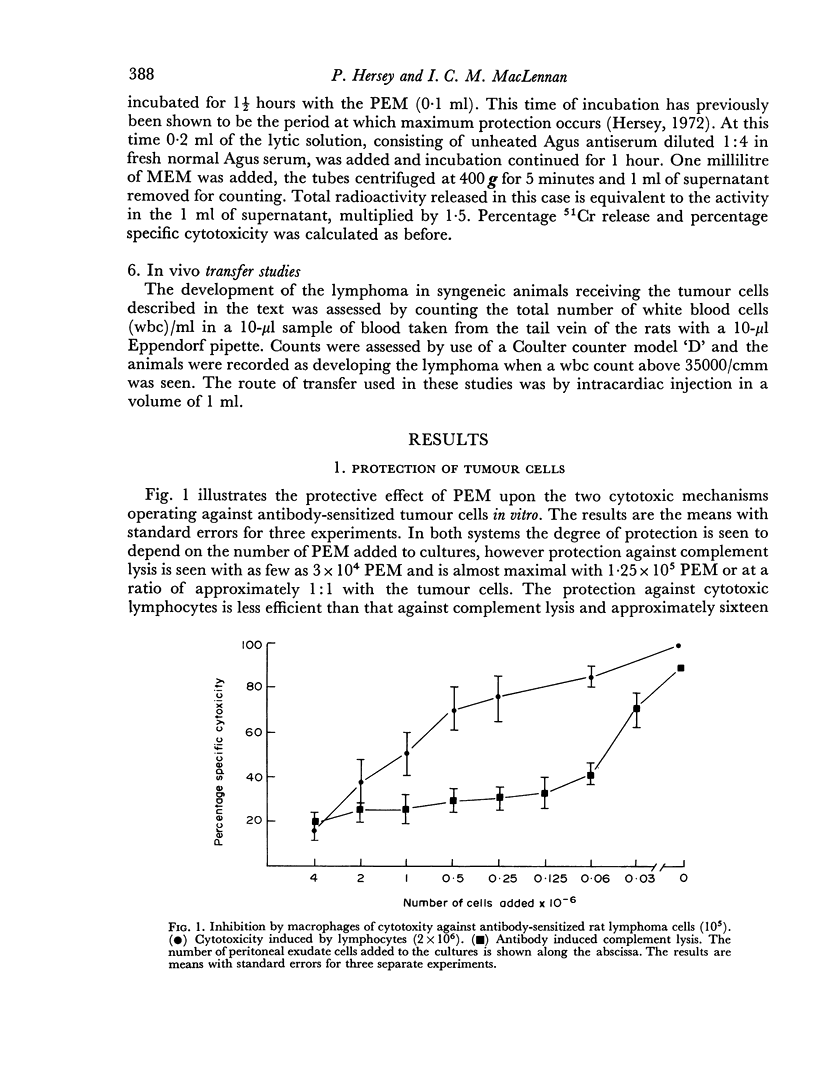
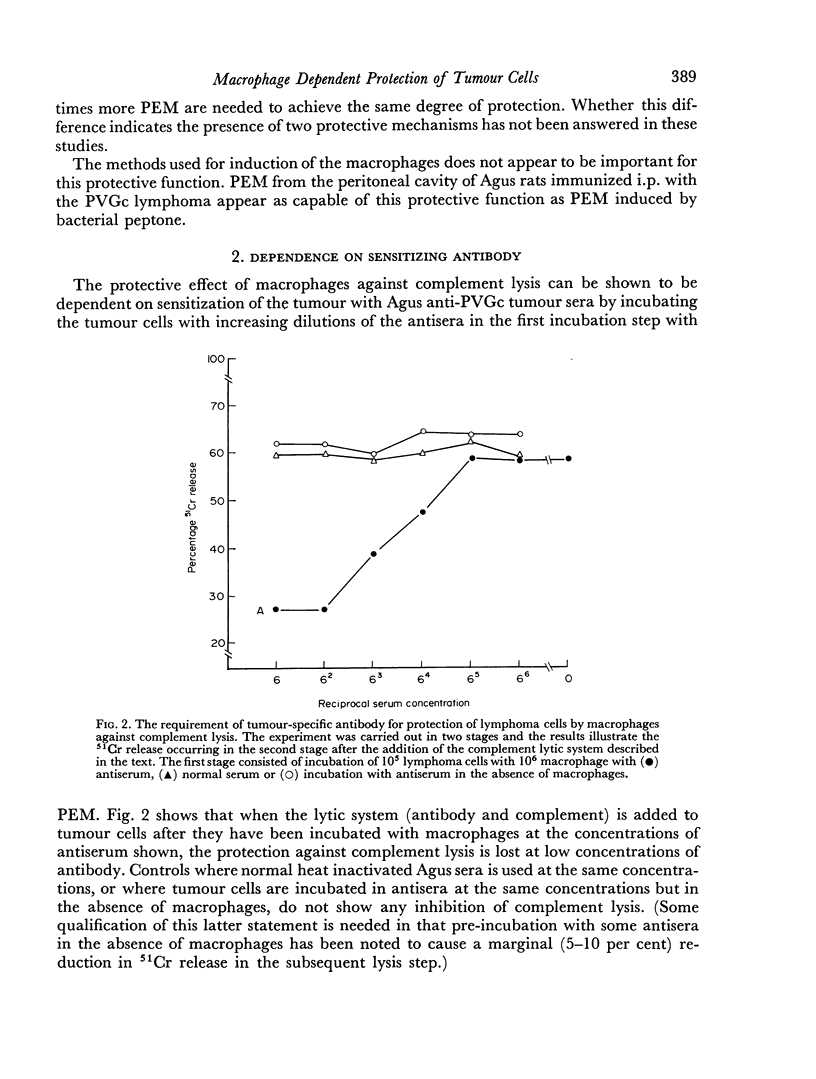
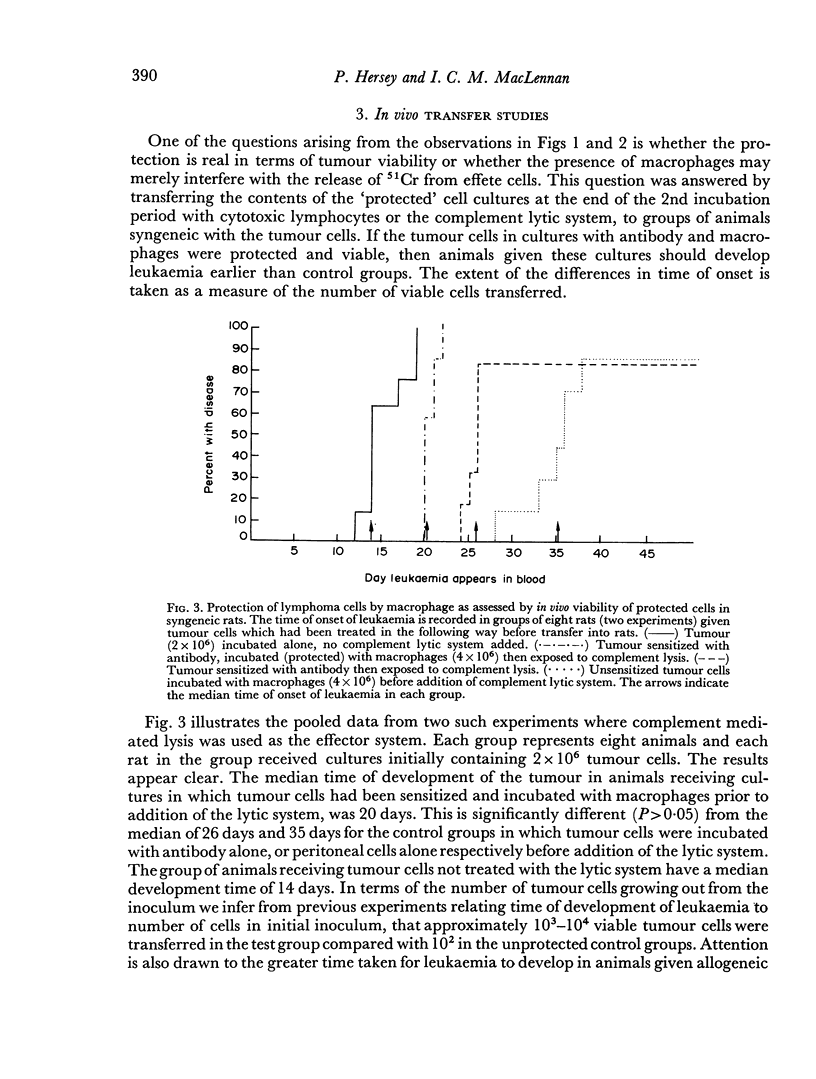

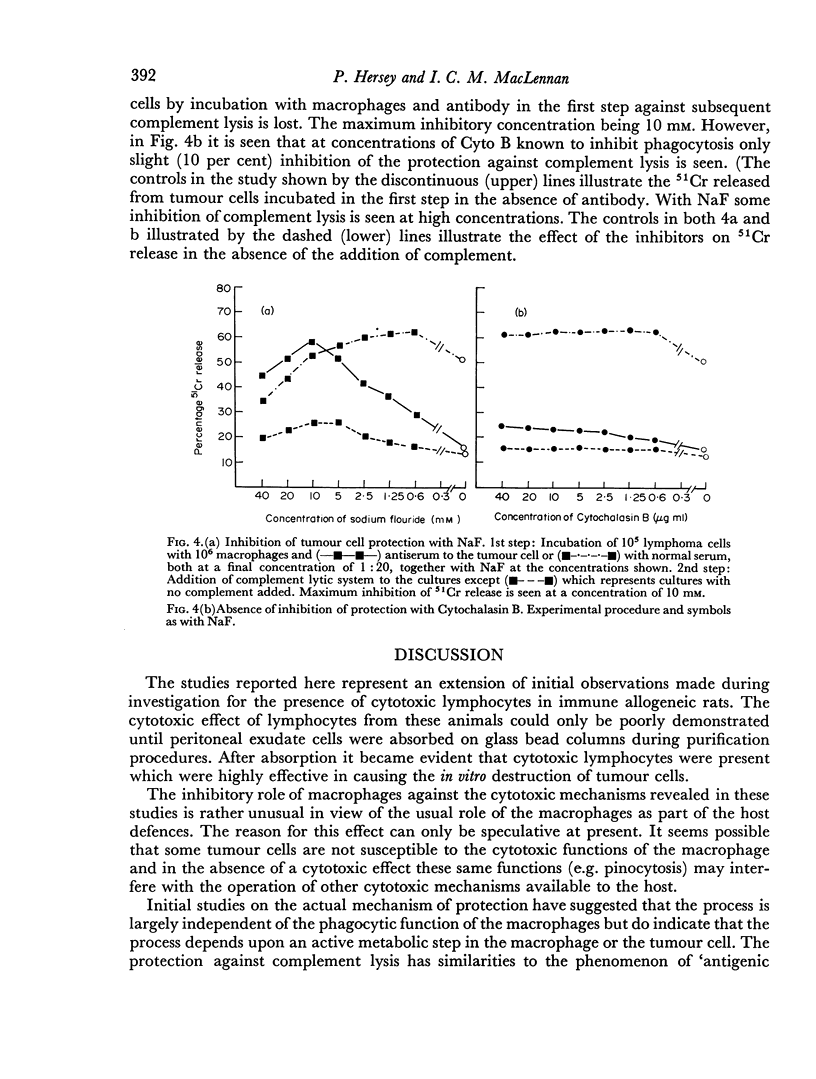

Selected References
These references are in PubMed. This may not be the complete list of references from this article.
- Allison A. C., Davies P., De Petris S. Role of contractile microfilaments in macrophage movement and endocytosis. Nat New Biol. 1971 Aug 4;232(31):153–155. doi: 10.1038/newbio232153a0. [DOI] [PubMed] [Google Scholar]
- Britton S. Growth-retarding mechanisms against lymphatic tumours. Search in mice and men. Transplant Rev. 1971;7:146–178. doi: 10.1111/j.1600-065x.1971.tb00466.x. [DOI] [PubMed] [Google Scholar]
- Brunner K. T., Mauel J., Cerottini J. C., Chapuis B. Quantitative assay of the lytic action of immune lymphoid cells on 51-Cr-labelled allogeneic target cells in vitro; inhibition by isoantibody and by drugs. Immunology. 1968 Feb;14(2):181–196. [PMC free article] [PubMed] [Google Scholar]
- Cohn Z. A. The regulation of pinocytosis in mouse macrophages. I. Metabolic requirements as defined by the use of inhibitors. J Exp Med. 1966 Oct 1;124(4):557–571. doi: 10.1084/jem.124.4.557. [DOI] [PMC free article] [PubMed] [Google Scholar]
- Evans R., Alexander P. Cooperation of immune lymphoid cells with macrophages in tumour immunity. Nature. 1970 Nov 14;228(5272):620–622. doi: 10.1038/228620a0. [DOI] [PubMed] [Google Scholar]
- Evans R., Alexander P. Mechanism of immunologically specific killing of tumour cells by macrophages. Nature. 1972 Mar 24;236(5343):168–170. doi: 10.1038/236168a0. [DOI] [PubMed] [Google Scholar]
- GRANGER G. A., WEISER R. S. HOMOGRAFT TARGET CELLS: SPECIFIC DESTRUCTION IN VITRO BY CONTACT INTERACTION WITH IMMUNE MACROPHAGES. Science. 1964 Sep 25;145(3639):1427–1429. doi: 10.1126/science.145.3639.1427. [DOI] [PubMed] [Google Scholar]
- Keller R., Jones V. E. Role of activated macrophages and antibody in inhibition and enhancement of tumour growth in rats. Lancet. 1971 Oct 16;2(7729):847–849. doi: 10.1016/s0140-6736(71)90222-4. [DOI] [PubMed] [Google Scholar]
- Mackaness G. B. The influence of immunologically committed lymphoid cells on macrophage activity in vivo. J Exp Med. 1969 May 1;129(5):973–992. doi: 10.1084/jem.129.5.973. [DOI] [PMC free article] [PubMed] [Google Scholar]
- Perper R. J., Zee T. W., Mickelson M. M. Purification of lymphocytes and platelets by gradient centrifugation. J Lab Clin Med. 1968 Nov;72(5):842–848. [PubMed] [Google Scholar]


